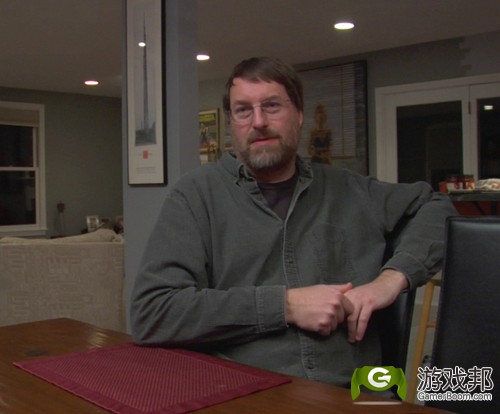Playdom副总裁分享社交游戏道具设计和销售经验
让我们学学著名社交游戏开发商Playdom的游戏课程吧。该公司是迪斯尼公司的全资子公司,属于迪斯尼互动媒体的一部分,旗下游戏(游戏邦注:Playdom的游戏有《Social City》、《Sorority Life》和《Mobsters》等)在不同社交网络上的月活跃用户总数超过4400万。
Playdom游戏设计副总裁Steve Meretzky分享了7个教授如何构建和运营社交游戏的设计课程。
不管你的游戏化目标是否包含从游戏中获得盈利,Meretzky都提供了增加盈利机会的方法。对用户参与特别感兴趣的游戏化设计师可以轻易地用其他用户行为来推动盈利,这些行为包括用户与好友共享站点或完善用户个人信息等。
无论采用何种方法,只有利用投入游戏的玩家才会获得最好的结果。依Playdom的定义,投入游戏的玩家通常显示出的特征包括比非付费用户多数十倍的游戏时间以及多数十倍的好友。
Playdom采用以下两种方法来盈利:
1、为不具耐心的用户提供产品和服务(游戏邦注:比如在使用能量的系统中,利用出售能量来盈利)
2、出售虚拟商品或可用于购买虚拟商品的货币
Meretzky分享的Playdom增加盈利商品的7条经验如下:
1、首先要吸引玩家,随后再考虑盈利。
2、持续销售与时效性的对比。游戏中道具的销售不应当恒久不变,用户的购买行为有时效性。Playdom度量分析显示,道具发布后24小时内的销售量占总销售量的1/3,24小时后销售开始逐渐减少。
3、销售量与道具在游戏中的价值有关。玩家最有动力购买那些改善游戏进程的道具,尤其是那些让自己与其他玩家相比占据优势的商品。
4、虚荣带动销售。以为角色购买的服装为例,看起来越棒或越酷的道具卖得越好。
5、参与社群交流。与玩家交流并开展调查,根据结果展开行动。社交游戏属于在线服务,要善于利用这个特征。
6、联系实际事件。将“现实世界”的商品和事件融入游戏中。
7、创新是关键。尽管A/B测试可以得出事物(游戏邦注:如游戏中道具类型、持续时间和价格等)的最佳形式,但重复会让人感到厌烦,新事物总是最好的。尽量更新事物,如果你做出与众不同之处,用户会欣赏你的。
如何知道游戏设计是否吸引人?
在发布新游戏前,Playdom通常会在公司内部测试30分钟时间。如果他们发现大部分员工在测试时间过后仍然玩游戏,那就表明游戏有成为巨作的可能。
对于那些没有如此众多员工的小公司来说,可以动用朋友和家人,你会很快发现游戏是否真正好玩。(本文为游戏邦/gamerboom.com编译,如需转载请联系:游戏邦)
7 Social Game Design Lessons from Playdom’s Steve Meretzky, VP Game Design
Take a peek into game design lessons from Playdom, a leading developer of social games. As a wholly-owned subsidiary of The Walt Disney Company and part of Disney Interactive Media, Playdom games are played by over 44 million monthly active users across different social networks, and include games such as Social City, Sorority Life, and.
The video below is from June 2010, and recorded at the Silicon Valley Facebook Developers and Social Gaming Meetup, with presentations by Playdom and KISSmetrics.
Steve Meretzky, VP of Game Design at Playdom shares 7 design lessons in building and monetizing social games.
Although your gamification goals may or may not include revenue derived from game play, Meretzky offers ways to increase opportunities for monetizing. Gamification designers interested in strictly user engagement could easily substitute monetization prompts with other user behaviors, such as sharing the site with friends, or completing user surveys/profiles.
Either way, your best results in getting a user to act will come from tapping into the engaged player. An engaged user, in Playdom terms, often exhibits characteristics including 10x more play sessions than a non-paying user, and 10x more friends.
Playdom uses 2 methods of monetizing:
- Offer products/services to the impatient player (for example: in a system that uses a supply of energy which depletes and recharges over time, there is an opportunity to sell energy)
- Sell virtual goods (or soft currency which can be spent on goods)
Meretzky’s 7 Lessons learned by Playdom to increase monetized goods are:
Lesson 1: Engage the player first, then monetize.
Lesson 2: Consistent sales/Time Pattern. Rather than having an item available consistently in game, create demand by staggering availability across a time pattern. Playdom metrics show that about 1/3 of all sales occur in the first 24 hours and then taper off.
Lesson 3: Gameplay value matters. Often times the largest motivators are items that improve the user’s play, in particular goods offering a Player vs Player advantage.
Lesson 4: Vanity dives sales. When dressing up avatars for example, items that look better or cooler, sell better.
Lesson 5: Involve the community. Communicate with your players, offer polls/surveys and act on results. Social Games are a live service, take advantage of that fact.
Lesson 6: Current event tie-ins work. Bring “real world” goods and events into the game.
Lesson 7: Shake it up, Baby! Although A/B testing leads to the “best” of everything (item type, duration, price, etc), repetition can become stale and new is better than best. Shake things up, the user base appreciates it when you do something different.
How do you know your game designs are engaging?
Before launching a new game, Playdom often performs 30-minute company play sessions. If they continue to see large groups of people playing during “off hours”, it’s a good indication that they have a hit.
For smaller companies that don’t have a lot of people internally, use friends and family and you’ll find out quickly if your game is really fun or not.
The presentations from Hiten Shah, CEO and Co-Founder of KISSmetrics and Matthew Davie, Project Lead, Publishing at Playdom are also on the video.
Steve Meretzky’s presentation is at 38:50 in the video. (The complete video including KISSmetrics is approx 1 hour and 36 min in length.) (Source: Strategic Synergy)








































 闽公网安备35020302001549号
闽公网安备35020302001549号